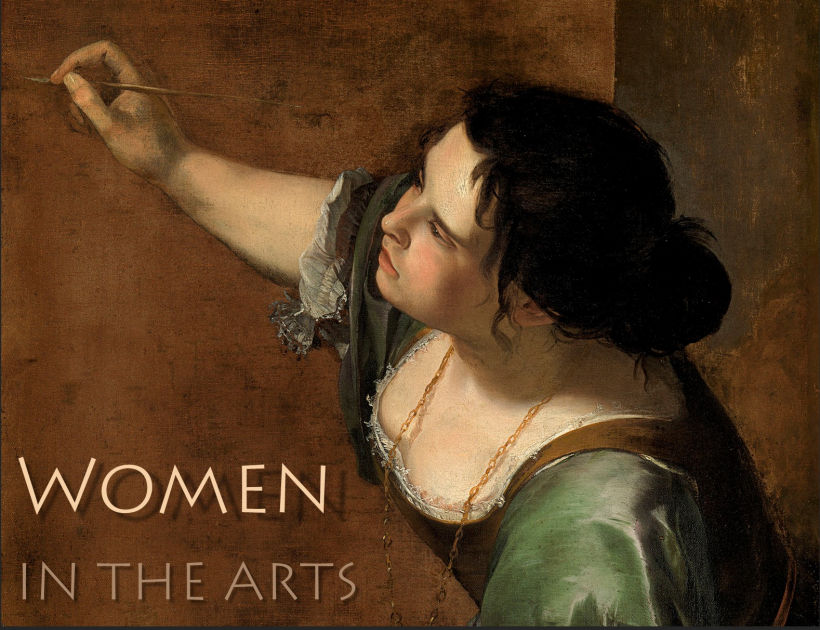Here are brief bios of the artists, composers, and writers considered in the class, listed in order of birth.
All the specific biographies of women featured in the course are collected in the
BIOS link on the syllabus page.
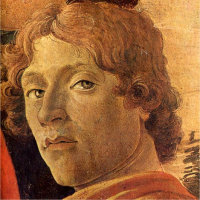 |
Sandro Botticelli, 1445–1510. Italian painter.
Botticelli's work was neglected for centuries, but he is now acknowledged as the leading Florentine painter of the later quattrocento. Although he produced numerous religious paintings, he is best known for two large mythological works: Primavera (c.1480) and The Birth of Venus (c.1485).
|
 |
Albrecht Dürer, 1471–1528. German printmaker and painter.
The greatest German draughtsman of the Renaissance and a formidable intellect, he produced an astonishing series of woodcuts and engravings throughout his career, as well as a number of devotional paintings and portraits, plus numerous sketches and watercolors that testify to his extraordinary powers of observation.
|
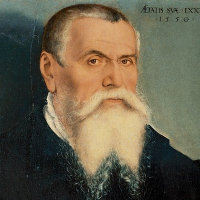 |
Lucas Cranach the Elder, 1472–1553. German painter and printmaker.
After some years in Vienna, he moved in 1504 to Wittenberg, as court painter to Frederick III. A close friend of Martin Luther's, he was one of the leading artists of the Protestant movement.
|
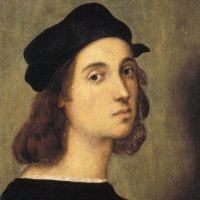 |
Raffaello Sanzio (Raphael), 1483–1520. Italian painter and architect.
One of the towering geniuses of the Italian Renaissance, Raphael was born in central Italy, and worked there until 1508, when he moved to Rome to decorate several stanze in the Vatican for Pope Julius II, and later his successor Leo X. The influence of these and other works of the period can be seen in religious art for many centuries to come. He was also one of the many architects of St. Peters.
|
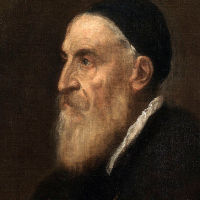 |
Tiziano Vecellio (Titian), 1485–1576. Venetian painter.
Arguably the greatest Venetian painter of the High Renaissance, he produced works in just about every genre over an exceptionally long career. Probably his greatest influence was in his handling of paint and use of color, which became a starting point for Rubens and others in the next century.
|
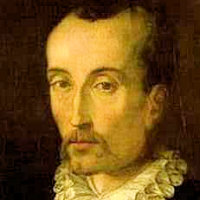 |
Giaches de Wert, 1535–96. Franco-Flemish composer.
Born in Flanders, Wert went to Italy as a choirboy and remained there the rest of his life, working mainly for the Gonzaga court in Mantua and the Este court in Ferrara. He played an important part in the development of the madrigal in Italy in the generation befoe Monteverdi.
|
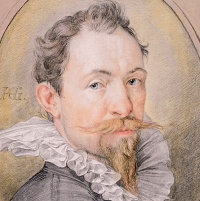 |
Hendrik Goltzius, 1558–1617. Dutch printmaker and painter.
The leading engraver of his time, he both reproduced the work of others and produced work of his own, often influenced by his time spent in Rome. His landscapes from about 1600 on are clear precursors of the great tradition of Dutch landscape painting.
|
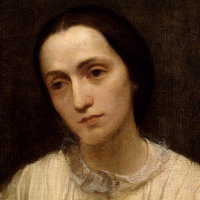 |
Julia Margaret Cameron, 1815–79. English photographer.
Julia Margaret Pattle was born in British India, and remained there until her mid-forties as a society hostess until her husband retired to England in 1845. In 1863, when she was 48, she received a box camera as a Christmas present from her daughter, as "something to amuse her." Indeed it did, and she became famous for her portraits of famous sitters, such as her neighbor Tennyson, and inventive restagings of literary works.
|
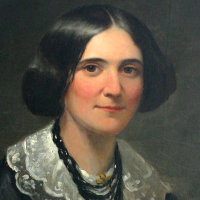 |
Alice Cary, 1820–71. American writer.
Although receiving little formal education, Alice and her younger siser Poebe (b.1824) began publishing in local newspapers in their teens, and in 1849 moved to New York where they established a literary salon. She also wrote three novels and three books of short stories.
|
 |
Coventry Patmore, 1823–96. English poet and critic.
Patmore is best known for his long poem The Angel in the House, in praise of his wife Emily, published serially between 1854 and 1862. Though decried today, it became immediately popular as an expression of the Victorian ideal of a perfect marriage.
|
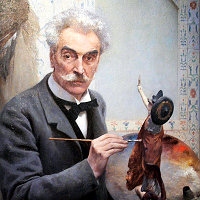 |
Jean-Léon Gérôme, 1824–1904. French painter.
A leading academic painter of the mid-century, his works have been described by one critic (Lorenz Eitner) as "carefully plotted picture-plays, graced with sex, spiced with gore, and polished into waxwork lifelikeness by a technique that his admirers took for realism."
|
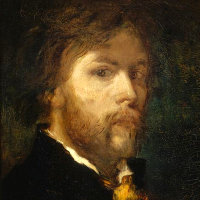 |
Gustave Moreau, 1826–98. French painter.
One of the leading Symbolists, his numerous paintings of Ovidian subjects include treatments of Phaëthon, Europa, Semele, Orpheus, Jason, Andromeda, and others.
|
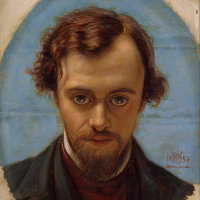 |
Dante Gabriel Rossetti, 1828–82. English painter and poet.
A member of an unusually talented and literary family (father a Dante scholar, sister Christina a poet), he hesitated before devoting himself to painting, but then in 1848 became the co-founder and virtual leader of the Pre-Raphaelite Brotherhood, which influenced the course of Victorian art for the rest of the century. Although he became mannered in later life, his earlier works have a remarkable freshness and sincerity.
|
 |
John Roddam Spencer Stanhope, 1829–1908. English painter.
Stanhope inherited money that enabled him to devote himself to painting; he studied with George Watts and traveled with him abroad. On his return, he became a second-generation affiliate of the Pre-Raphaelite circle, painting in a style somewhat similar to Burne-Jones.
|
 |
Elizabeth Siddal, 1829–62. English painter, poet, and model.
Lizzie Siddal was the go-to model for many of the Pre-Raphaelites, including for Millais' Ophelia and many paintings by Dante Gabriel Rossetti, who became her husband. Siddal was also a poet, and a painter herself. Scholars have been divided on how many of her few surviving works were collaborations with Rossetti or entirely her own.
|
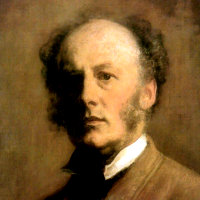 |
John Everett Millais, 1829–96. English painter.
Millais was, with DG Rossetti and William Holman Hunt, one of the founders of the Pre-Raphaelite Brotherhood in 1848. At first noted for his highly realistic treatment of religious and literary subjects, he later adopted a more sentimental style, with which he was hugely successful.
|
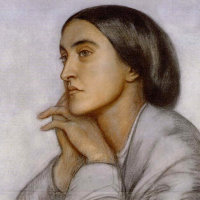 |
Christina Rossetti, 1830–94. English poet.
Christina was the younger sister of Dane Gabriel Rossetti and the model for several of his paintings. She began publishing her poetry in 1848. Although remembered for his Christmas carols "Love Came Down at Christmas" and "In the Bleak Midwinter," her popularity declined after her death, but later commentators point to the extraordinary language and psychosexual suggestion in works like Goblin Market (1862), possibly inspired by her volunteer work at a Home for Fallen Women.
|
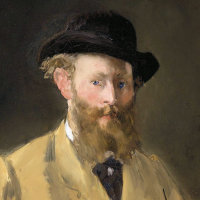 |
Édouard Manet, 1832–83. French painter.
Manet is arguably the greatest French painter in the third quarter of the 19th century. Though primarily a realist, he was influenced by older artists such as Titian and Velasquez. He was admired by the young Impressionists, became friends with Monet, and produced a number of works in their style, but he never exhibited with them, preferring to retain his own status in the official Salons.
|
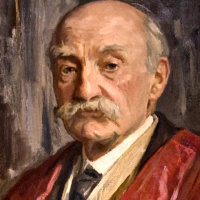 |
Thomas Hardy, 1840–1928. English novelist and poet.
Although thinking of himself primarily as a poet, Hardy is most often remembered as the author of pastoral realist novels set in "Wessex," his name for a large swath of Southwest England, the country that he loved. While Far From the Madding Crowd ends happily, more of his novel have an elegaic pessimism that is found also in his verse.
|
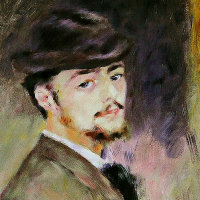 |
Pierre-Auguste Renoir, 1841–1919. French painter.
A leading member of the Impressionist group, he began his career as a china painter in the Limoges factory, which—together with his admiration of Rococo masters such as Watteau and Fragonard—may have influenced the sweetness of color seen in much of his work. He was more concerned with detail, and more interested in figures than most of his colleagues.
|
 |
Eva Gonzalès, 1849–83. French painter.
The daughter of a successful writer, Gonzalès was introduced to Paris art circles at an early age. When she was 20, she began to study with Édouard Manet, and her painting remains close to her mentor's style. Like him, she is often described as an Impressionist but never took part in the group exhibitions.
|
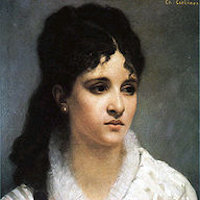 |
Mel Bonis, 1858–1937. French composer.
Though trained at the Paris Conservatoire under César Franck and others, Bonis' parents made her withdraw to marry a much older man who did not like music. Only after she had borne three children did she return to composition, but then developed quite a prolific career. Saint-Saens said of her Piano Quintet, "I did not know a woman could write such music!"
|
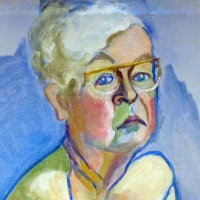 |
Alice Neel, 1900–84. American painter.
Known for her portraits, Neel's "paintings have an expressionistic use of line and color, psychological acumen, and emotional intensity. Her work depicts women through a female gaze, illustrating them as being consciously aware of the objectification by men and the demoralizing effects of the male gaze. Her work contradicts and challenges the traditional and objectified nude depictions of women by her male predecessors. She pursued a career as a figurative painter during a period when abstraction was favored, and she did not begin to gain critical praise for her work until the 1960s." [Wikipedia]
|
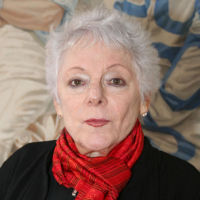 |
Linda Nochlin, 1931–2017. American art historian.
"Many scholars have called Linda Nochlin’s seminal essay Why Have There Been No Great Women Artists? (1971) the first real attempt at a feminist history of art. In her revolutionary essay, Nochlin refused to answer the question of why there had been no 'great women artists' on its own corrupted terms, and instead, she dismantled the very concept of greatness, unraveling the basic assumptions that created the male-centric genius in art." [Amazon product description]
|
 |
Kathleen Gilje, 1945– . American painter.
Trained as a restorer of old master paintings, and working professionally for the Metropolitan and other major museums, Gilje also paints exact but subtly altered version of famous artworks as the subject of her own art, producing a kind of practical and often feminist art criticism. [The image is based on a portrait by Sargent, and may or may not represent the artist herself.]
|
 |
Danusha Laméris, 1971– . American poet.
Born to a Dutch father and a Caribbean mother, Laméris was raised in California and has a degee in art from from UC Santa Cruz. She has published two award-winning books of poetry: The Moons of August (2014) and Bonfire Opera (2020).
|
